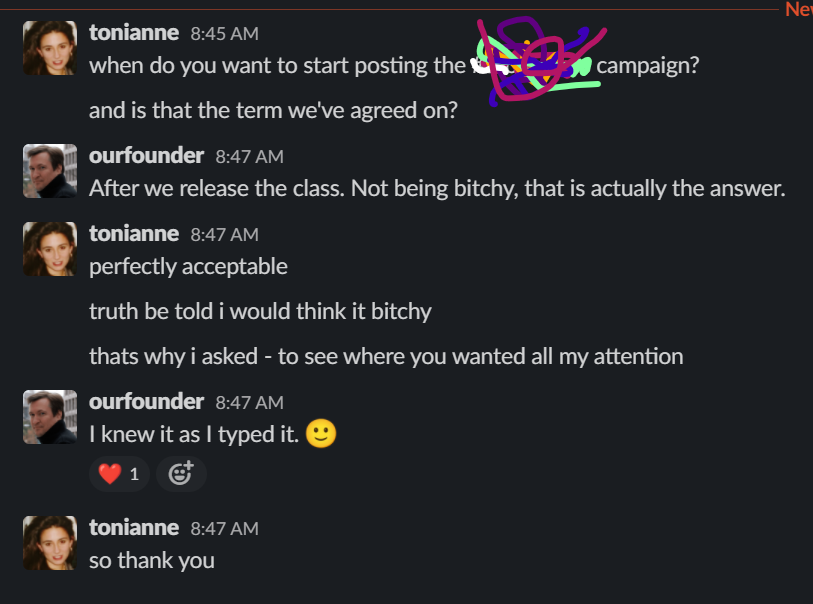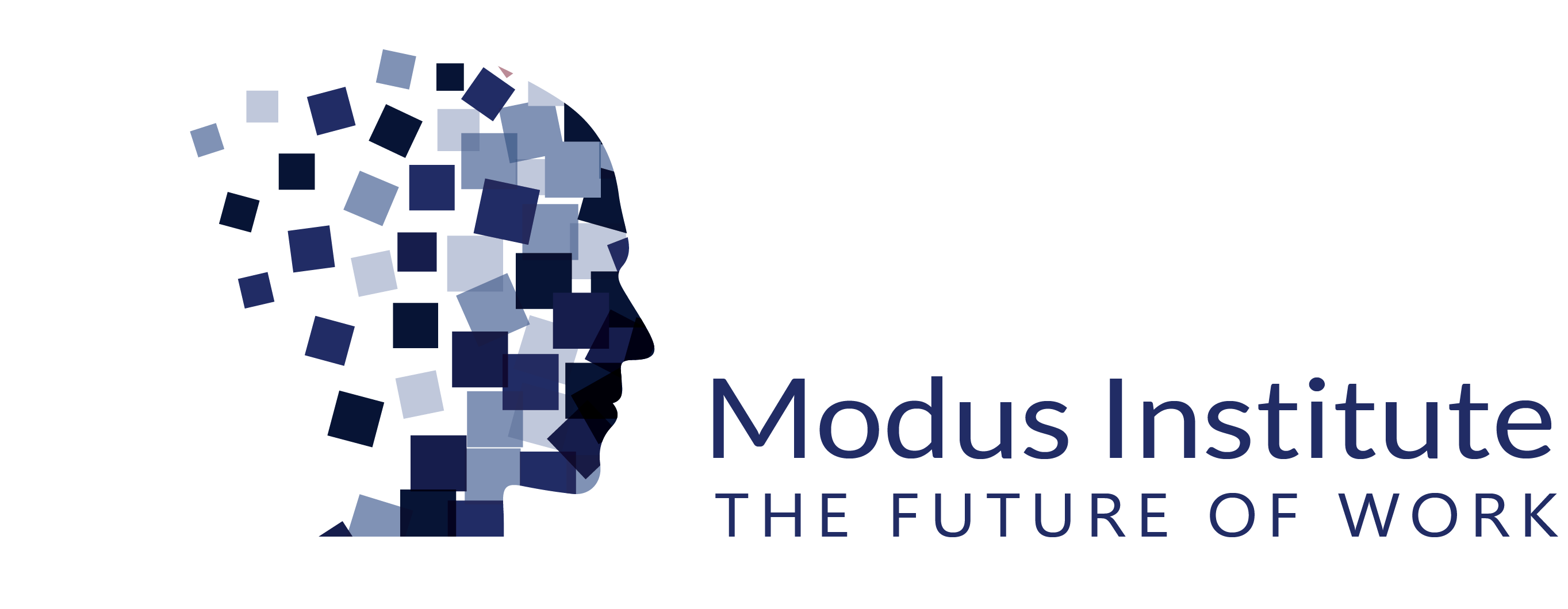Communicating Respectfully in an Online Distributed World
Nov 3
/
Jim Benson
Your team is your life. They support you, they help you learn, they grow and expand your perspective. Without them, you get nothing done.
Modern tools for project management and communication allowed the global economy to survive (not unscathed, but at all) our ongoing global pandemic. Slack, Teams, Google Docs, Jira, and a wide array of other tools allowed individuals in teams to continue to create value. That is awesome.
They are also minefields of lost information, misunderstandings, and rapid emotional escalation.
Modern tools for project management and communication allowed the global economy to survive (not unscathed, but at all) our ongoing global pandemic. Slack, Teams, Google Docs, Jira, and a wide array of other tools allowed individuals in teams to continue to create value. That is awesome.
They are also minefields of lost information, misunderstandings, and rapid emotional escalation.
Social media has taken our previous attachments to thin slicing, system one thinking, and conclusion jumping and made these their own global pandemics.
At Modus Institute, we are a very small team that is routinely taking on big challenges with our clients, our school, and our community involvement. During a pandemic, we’ve had sick or dying family members, stolen cars (plural!), home water disasters, relocations, and so on. So, just like you and your team, there’s been a lot going on that leaves us on edge.
This means that Toni, Dave, all of us are obliged, professionally and personally, to keep an eye out for unintended consequences. In other words, we need to turn our awareness up. We need to watch out for each other.
At Turner Construction, they call this Active Caring.
At Modus Institute, we are a very small team that is routinely taking on big challenges with our clients, our school, and our community involvement. During a pandemic, we’ve had sick or dying family members, stolen cars (plural!), home water disasters, relocations, and so on. So, just like you and your team, there’s been a lot going on that leaves us on edge.
This means that Toni, Dave, all of us are obliged, professionally and personally, to keep an eye out for unintended consequences. In other words, we need to turn our awareness up. We need to watch out for each other.
At Turner Construction, they call this Active Caring.

How to Have Respectful Communication… Quickly
In the image above, from just moments ago, was a Slack exchange about the launch of a new Modus Institute campaign. We are close to releasing our new class in problem solving for knowledge work called “Finding Solutions,” and that’s taking up much of our attention at the moment.
Toni is excited about the new campaign and getting to do some innovative writing for it. I knew as I was typing “After we release the class” that my words would read as bitchy to someone who was very excited about something and being “told” that we were going to do something else.
Even if we make all our decisions together and I never “tell” Tonianne to do anything, the emotions and the redirection would be seen not as, “Hey, we are all excited about the campaign, but we should really focus on completing the other thing.” It would read like “Shut up and get the work done.”
Toni is excited about the new campaign and getting to do some innovative writing for it. I knew as I was typing “After we release the class” that my words would read as bitchy to someone who was very excited about something and being “told” that we were going to do something else.
Even if we make all our decisions together and I never “tell” Tonianne to do anything, the emotions and the redirection would be seen not as, “Hey, we are all excited about the campaign, but we should really focus on completing the other thing.” It would read like “Shut up and get the work done.”
The thin tether of text chat
morphs simple, well-meant statements
into terse, unpleasant messages.
No matter how I wordsmithed that message, it would always be read like the bold text. The active caring couldn’t come in the message, it had to come as a follow-up. Why? Because the professional desire and emotions to work on the campaign were real and would exist regardless of how pillowy soft my message delivery was. Noting specifically that I recognized that the message would not be enjoyable and that I wasn’t ignorant of that fact showed respect for my colleague.
And I like my colleague.
So should you.
And I like my colleague.
So should you.
How to Use Respect in Online Communication to Avoid Horrible Meetings
Something important to note. In a two minute exchange that quickly ended, we discussed, found direction, and left the conversation. If that had not happened, there are any number of possible outcomes. We could argue, she could be secretly mad at me, or she could go and work on the campaign in secret. Or, we could release the class, then do the campaign, then do ten other things, then we have a similar conversation and she could say “You always do this!” and I’d be like….Whaaa?
Not that Toni would necessarily do any of those things, but I would, you would, and we’ve all been on both sides of these misunderstandings. These misunderstandings fester when we don’t think too much about facilitating respectful communication. They then require tons of work to undo. Uncomfortable meetings. People feeling wronged who weren’t (but were). People feeling like they are forced to apologize for something they didn’t do (but did). Or worse, these never happen and the friction that is created between team members slow all work down in perpetuity.
Taking a few moments to look at a message, read it from the POV of the recipient, and editing as necessary saves tons of wasted time and emotion and ensures that we are doing our part for having a respectful communication.
What we are doing is noting that we as individuals didn’t mean to say something annoying, but we did because the system (text chat) is cold and impersonal and the words we write and read are also cold and impersonal. When are they not? Well, let’s look at the image again and note when warmth and humanity showed up.
You love them, you hate them, but humanity showed up with the emojis. … Used correctly.
If I’d typed “After we release the class. :-) ”, that smiley would be mocking. That would be the very definition of tone deaf, which is when we don’t consider how others will interpret something we say before we say it and facilitate anything but respectful communication.
We’ve all been there as well.
We’ve also been in the long conversations with others saying “That’s not what I meant.” Well, it’s much like manslaughter. You didn’t mean it, but there is a victim. The victim is real and so is your trial.
So rather than whine about what we meant for hours on end, why don’t we just say the right thing at the right time?
Not that Toni would necessarily do any of those things, but I would, you would, and we’ve all been on both sides of these misunderstandings. These misunderstandings fester when we don’t think too much about facilitating respectful communication. They then require tons of work to undo. Uncomfortable meetings. People feeling wronged who weren’t (but were). People feeling like they are forced to apologize for something they didn’t do (but did). Or worse, these never happen and the friction that is created between team members slow all work down in perpetuity.
Taking a few moments to look at a message, read it from the POV of the recipient, and editing as necessary saves tons of wasted time and emotion and ensures that we are doing our part for having a respectful communication.
What we are doing is noting that we as individuals didn’t mean to say something annoying, but we did because the system (text chat) is cold and impersonal and the words we write and read are also cold and impersonal. When are they not? Well, let’s look at the image again and note when warmth and humanity showed up.
You love them, you hate them, but humanity showed up with the emojis. … Used correctly.
If I’d typed “After we release the class. :-) ”, that smiley would be mocking. That would be the very definition of tone deaf, which is when we don’t consider how others will interpret something we say before we say it and facilitate anything but respectful communication.
We’ve all been there as well.
We’ve also been in the long conversations with others saying “That’s not what I meant.” Well, it’s much like manslaughter. You didn’t mean it, but there is a victim. The victim is real and so is your trial.
So rather than whine about what we meant for hours on end, why don’t we just say the right thing at the right time?
How to Implement Respectful Communication
Back when text chat was novel, at Gray Hill Solutions we were using Trillian, an app that let us chat with IRC, Yahoo Messenger, and a host of other platforms. William Rowden and I got into some very heated arguments using Trillian that we solved in about 30 seconds when we stopped angrily typing and picked up the phone. I remember the pinnacle of this where we were each in our offices typing angrily. There was a window between our offices that, if it weren’t there, we could literally reach across the desks and touch each other.
Yet there we were pounding on the keyboards, the aggression we and everyone else could hear, and finally one of us picked up the phone and called the other and said, “I love you!”
And we looked at each other through the window and laughed.
We agreed that day that if we were ever on one particular medium, and things got tense, we’d switch to a different mode of more respectful communication. Toni and I kept that implementation of respect at Modus. We’ve augmented it, over time, to include things like in the exchange today.
This is not easy. When you are busy and slack is going over and over again, you want to rip it from your screen and jump up and down on its face with golf shoes.
But that’s not how you enjoy respectful communication.
So we have other ways of taming the Slackish beast.
Yet there we were pounding on the keyboards, the aggression we and everyone else could hear, and finally one of us picked up the phone and called the other and said, “I love you!”
And we looked at each other through the window and laughed.
We agreed that day that if we were ever on one particular medium, and things got tense, we’d switch to a different mode of more respectful communication. Toni and I kept that implementation of respect at Modus. We’ve augmented it, over time, to include things like in the exchange today.
This is not easy. When you are busy and slack is going
But that’s not how you enjoy respectful communication.
So we have other ways of taming the Slackish beast.

In the image above, I am marked as In the Studio (🎥) which means that I’m not going to respond to you on Slack for at least one hours. When the little camera icon shows up, everyone knows what I’m doing. I set Slack to silent and go to work.
Additionally, Tonianne (or Jim) is marked as being in a Pomodoro (🍅). That says basically the same thing, that Toni is in a focus mode for the next 25 minutes to an hour and she, too, will come back later and look at Slack.
These not only set expectations for replies in others but also in ourselves, we free ourselves from the existential overhead of working away, distracted by attention destroying thoughts like, “ohhh, something is going on in Slack, I should go look at Slack, because I’m not looking at Slack and someone just posted something else, oooh I wonder what they are saying, oh my god I don’t know!” Then you go and look and it’s something annoying and you type something quickly and…all hell breaks loose.
Additionally, Tonianne (or Jim) is marked as being in a Pomodoro (🍅). That says basically the same thing, that Toni is in a focus mode for the next 25 minutes to an hour and she, too, will come back later and look at Slack.
These not only set expectations for replies in others but also in ourselves, we free ourselves from the existential overhead of working away, distracted by attention destroying thoughts like, “ohhh, something is going on in Slack, I should go look at Slack, because I’m not looking at Slack and someone just posted something else, oooh I wonder what they are saying, oh my god I don’t know!” Then you go and look and it’s something annoying and you type something quickly and…all hell breaks loose.

How To Operationalize Culture
It’s dangerous to think that our processes and tools are not our culture. They embody our real culture and often work against our desired or stated culture. In this case, chat utilities, which are crucial for keeping us working together and exchanging professional information in real-time, come into conflict with our need to focus, to create, and to complete work. They also, as we’ve seen, escalate things that never needed to be escalated. Indeed they can transform good will into bad.
We don’t want that.
The simple rules above are but a few in a limitless set of ways to work together and have respectful communication. Look for the conflicts in your team, look for the communication patterns behind them, then make costly misunderstandings go away.
We don’t want that.
The simple rules above are but a few in a limitless set of ways to work together and have respectful communication. Look for the conflicts in your team, look for the communication patterns behind them, then make costly misunderstandings go away.

We are an online educational platform that helps professionals and aspiring individuals to succeed in their goals.
Copyright © 2025